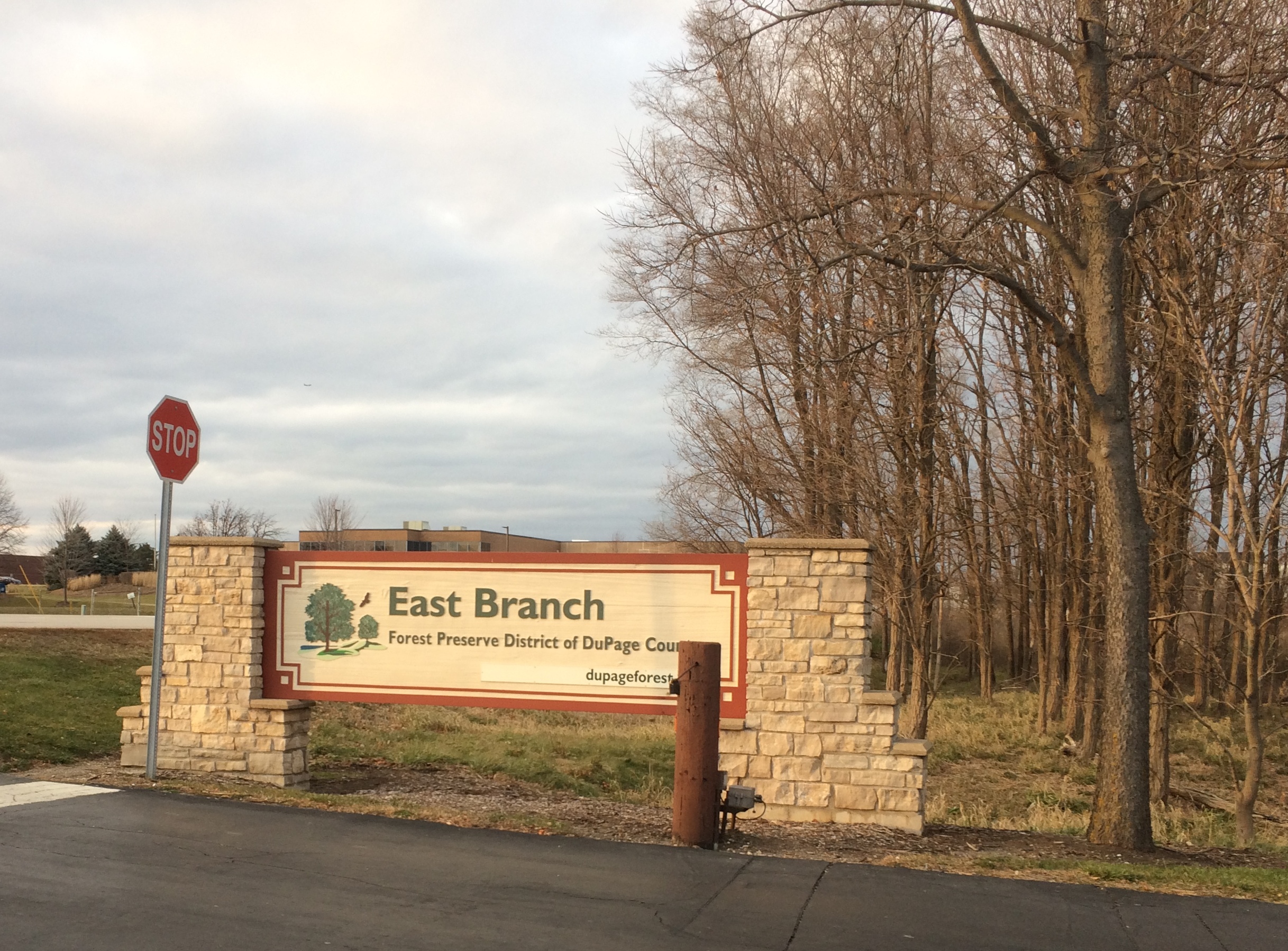We haven’t been in any restaurants or theaters or concert venues since March, and our membership at the municipal indoor pool long ago lapsed. On the other hand, we’ve been to a lot of green spaces this year, now brown as fall has vanished into winter, including city parks, state parks, and one national forest, monument and park each. But especially that kind of undeveloped land specific to Illinois: the forest preserve, a localized legacy of Progressive Era activism.
I wondered how many we’ve been to this year, so I made a count. Five visits to forest preserves we’ve been to before, and 10 new ones, variously in Cook, DuPage, Kane and Lake counties. I doubt that we visited more than one or two new ones a year before 2020. Fifteen is only a small fraction of however many hundreds of preserves there might be statewide, but I’m glad we’ve taken the walks, and plan to continue doing so next year.
On Saturday afternoon, we took a walk at East Branch, a 521-acre unit of the DuPage County Forest Preserve District in Glendale Heights. Temps were in the 40s. That’s warm enough for a forest preserve walk.
 “East Branch was previously used as farmland prior to the Forest Preserve District acquiring it in the early 1970s,” the district web site says. “During the 1980s, wetlands were created along the East Branch DuPage River as mitigation for the construction of Interstate 355.”
“East Branch was previously used as farmland prior to the Forest Preserve District acquiring it in the early 1970s,” the district web site says. “During the 1980s, wetlands were created along the East Branch DuPage River as mitigation for the construction of Interstate 355.”
A trail from a small parking lot off Glen Ellyn Road leads to a small lake.
 It’s called Rush Lake. The district asserts that it’s a good place to see waterfowl, and so it was. Ducks, at least.
It’s called Rush Lake. The district asserts that it’s a good place to see waterfowl, and so it was. Ducks, at least.
 The main trail circles around the lake, though sometimes a little ways from the shore. Hoofprints in the mud along the way meant horse riding is an activity there, but we didn’t see any riders. We saw two men with fishing poles, a woman walking a dog and a man simply walking around. That was all.
The main trail circles around the lake, though sometimes a little ways from the shore. Hoofprints in the mud along the way meant horse riding is an activity there, but we didn’t see any riders. We saw two men with fishing poles, a woman walking a dog and a man simply walking around. That was all.
 It was about an hour until sunset. The view to the west.
It was about an hour until sunset. The view to the west.
 The view to the north.
The view to the north.
 The dome off in the distance is St. Andrew Ukrainian Orthodox Cathedral.
The dome off in the distance is St. Andrew Ukrainian Orthodox Cathedral.